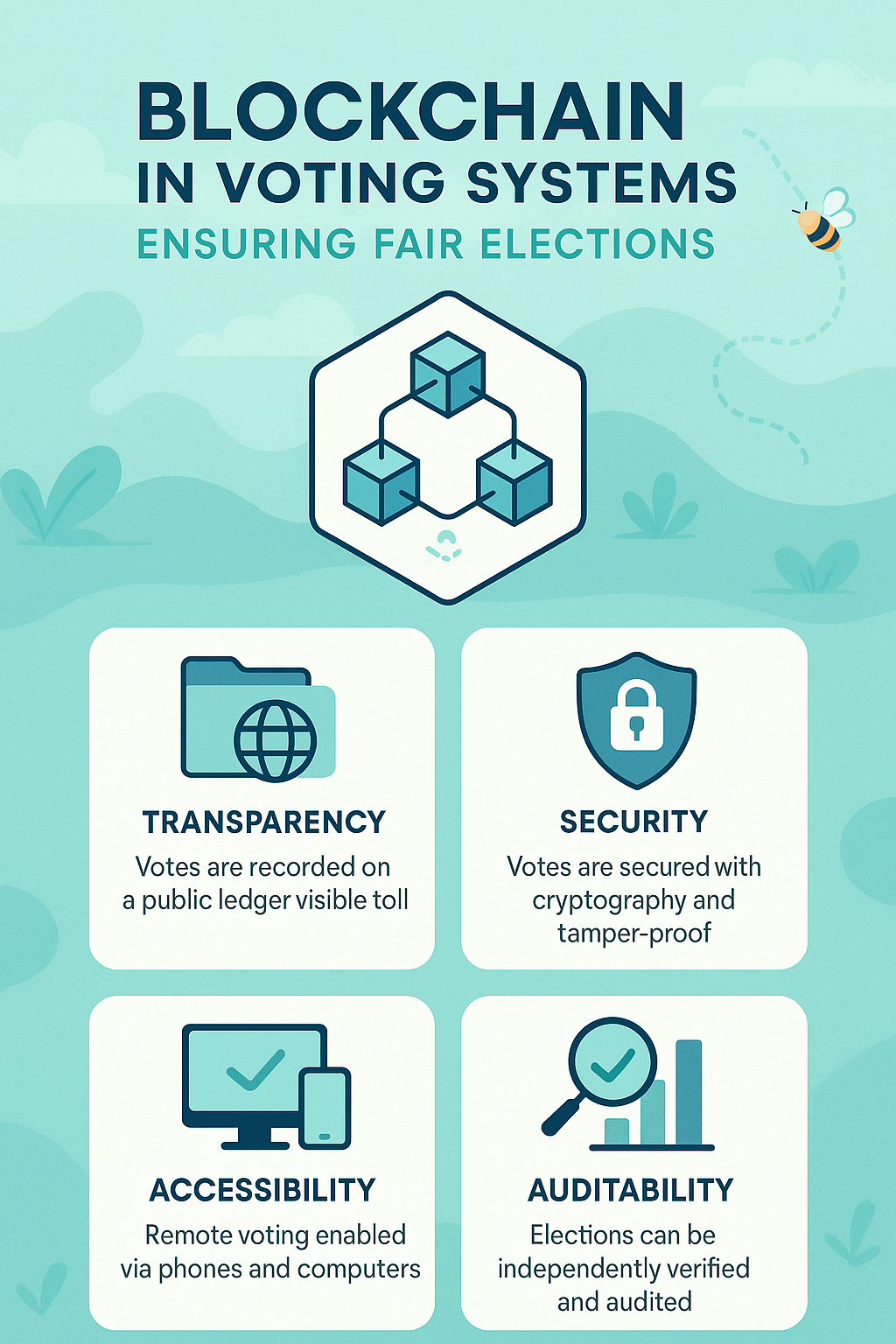Blockchain in Voting Systems: Ensuring Fair Elections
Flutter Bees: Relieve Your Stress with a Tap!
Play the Flutter Bees Telegram Mini App – tap your way to relaxation in the clicker game or strategize in the bee hive defense game. Earn points, complete tasks, and unwind at any time!
Blockchain in Voting Systems: Ensuring Fair Elections
In the digital age, ensuring secure, transparent, and fair elections has become increasingly important. Traditional voting systems often suffer from issues like tampering, voter fraud, low transparency, and accessibility limitations. Blockchain technology offers a revolutionary solution that can reshape how we conduct elections.
What is a Blockchain Voting System?
A blockchain voting system is a digital voting platform built on blockchain technology. Every vote is recorded as a transaction on a decentralized, immutable ledger, making tampering virtually impossible. This provides greater security, transparency, and auditability.
Key Benefits of Blockchain in Voting:
- Transparency
All votes are recorded on a public ledger visible to all participants. This makes the process transparent and verifiable by independent observers. - Security
Blockchain’s cryptographic nature protects against hacking, double voting, or vote manipulation. Each vote is securely stored and cannot be altered once recorded. - Accessibility
Citizens can vote from anywhere using their phones or computers, improving voter turnout and allowing participation even in remote or conflict-affected areas. - Auditability
Blockchain systems allow real-time tracking and auditing. Election results can be verified instantly without waiting for manual counts. - Reduced Costs
Blockchain eliminates many administrative steps, reducing the cost of elections significantly by automating vote collection and counting.
Challenges and Considerations
- Digital Divide: Not all voters may have access to the necessary devices or internet.
- Technical Literacy: Users must understand how to use digital platforms securely.
- Regulatory Hurdles: Governments must adopt new legal frameworks and standards.
- Privacy vs. Transparency: Maintaining voter anonymity while ensuring vote traceability is a technical challenge.
Real-World Examples
- Estonia: A pioneer in digital governance, Estonia has experimented with blockchain-based voting.
- Sierra Leone: In 2018, blockchain was used to verify election results in parts of the country.
- South Korea: Working on blockchain voting pilots to improve trust and participation.
Flutter Bees Helps You Stay Calm During Election Talks
Take a break from election debates—Flutter Bees offers a fun escape! Tap bees, build your hive, and earn rewards. Play now and ease your mind.
Conclusion
Blockchain technology holds immense potential to strengthen the foundation of democracy. By making elections more secure, transparent, and accessible, blockchain-based voting systems can restore public trust and boost participation. As we move into a more digital future, embracing such innovations could be the key to ensuring free and fair elections.
Flutter Bees: The Buzzing Game for Stress Relief
Whether you’re tracking votes or waiting for results, Flutter Bees is your go-to relaxation game. Watch, tap, and win—right inside Telegram!






Post Comment